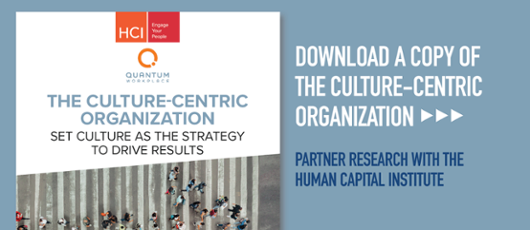What is Employer Branding and Why Does It Matter
 Do you know what your employees think about your company?
Do you know what your employees think about your company?
Your employer brand can make or break your recruitment and retention of top talent. In fact, the number one obstacle for job seekers is not knowing what it’s like to work at an organization.
That’s where your employer branding strategy comes in. How well you position your brand can either result in highly-qualified candidates who stick around long-term—or crickets from your recruiting pipeline and high turnover among employees.
In this blog, we will cover:
- What employer branding is
- Why employer branding is important
- How to create a strategy for employee, team, and business success
What is employer branding?
Your employer brand is your company’s reputation as an employer and reflects the values that make up your culture’s DNA. Employer brand also describes the added value your company brings to employees, such as great benefits, career development, and work-life balance.
In other words, employer brand is what current and prospective employees think about your company as a place to work. It encompasses how you market your company to job seekers and how you frame your messaging and culture to internal employees.
Your employer brand is fundamental to attracting, retaining, and engaging top talent. It is what differentiates your company from your competitors and makes you stand out as a great place to work.
Even if you have a stellar company brand around your products or services, that alone isn’t enough to attract and retain great people. You also need a strong employer branding strategy that demonstrates your company values, leadership, and culture in the workforce.
Building a strong employer brand is all about storytelling—and that involves both what story you tell, and how well you live up to that story.
The best employer brands will:
Project a positive image of the company.
This is a key function of your marketing communications and messaging choices, especially in internal communications and recruitment. Your employer brand will help you put your best foot forward with a consistent and positive messaging framework.
Promote core values.
These are your business’ fundamental beliefs and guiding principles. Today’s growing Millennial workforce is particularly interested in working for companies whose core values align with their own. Promoting your core values (and aligning your practices with those values) is an important part of attracting and retaining the right people.
Create a sense of identity.
Your employer brand encompasses much more than your recruitment strategies. It helps you create a company culture and identity that unifies your diverse workforce and helps attract people who identify with those values.
Boost employee morale.
Employer branding is about making your company a great place to work. When companies value and invest in their people, employees are happier and more engaged at work.
Outline a clear employee value proposition (EVP).
Your EVP is the rewards and benefits employees receive when working at your company. In other words, what value do you offer candidates and employees for joining your team? An EVP is a powerful tool in your employer branding tool belt because it can set your company apart from competing firms. Your EVP could include perks like work-life balance, flexible schedules, competitive compensation packages, and career development support.
Align the employer brand with the public company brand.
At the end of the day, your employer brand and your company brand should work hand-in-hand to support your business goals and establish a positive company reputation. And as your employer brand improves, it will bolster your external brand as well.
Why is employer branding important?
Employer branding is good for employees and good for business. Employer branding affects multiple aspects of your business including
- Recruitment
- Engagement
- Retention
The stronger your employer brand, the better you can attract, retain, and engage your people, and the more competitive and profitable your business will be.
LinkedIn found that strong employer branding led to a 28% reduction in turnover, 50% reduction in cost per hire, and 50% more qualified applicants.
Additionally, 75% of job seekers consider an employer’s brand before applying and 78% of candidates say the overall candidate experience they get is an indicator of how a company values its people.
So if you aren’t investing in and managing a robust employer branding strategy, you are missing a key recruitment advantage.
Not only does your employer brand bring in top talent, but once hired, employees at companies with strong employer brands are also more engaged. For example, one Deloitte study found that 83% of millennials are actively engaged when a company fosters a positive and inclusive culture compared to only 60% when the company does not foster inclusion.
Developing a great employer brand isn’t just good for your employees. When companies build a positive employer brand, their own employees become evangelists for the company—further reinforcing your brand and attracting people to your business.
How to improve your employer brand
Turnover, attrition, and retention are good indicators of a company’s overall health and how the company is doing on its employer brand.
Once you understand how your employer brand is performing, build out your employee value proposition and align your employer branding efforts with your company branding strategy.
Improve your EVP.
If your employer brand could use some TLC, a good place to start is by improving your employee value proposition. If you don’t have a documented EVP, now is the time to outline one.
Assess your policies and offerings and compare how they stack up against competitors’ offerings. Survey your employees to uncover benefits or cultural values they would like to see. These insights can help you identify gaps between what your employees want and need, and what your company currently offers.
Things to consider for your EVP include:
- Compensation
- Employee benefits like health care and parental leave
- Perks
- Career development and opportunities
At the end of the day, your EVP is all about attracting and engaging your employees based on what they need to be successful and happy at work.
Align your brands.
Your customer brand and your employer brand will not share every brand association or value, but they should complement each other. Align your employer branding strategy with your company brand by:
Identifying shared brand values.
These values are opportunities to collaborate with the corporate branding team to build cohesive, complementary strategies that reinforce one another.
Acknowledging where brand values divert.
These are areas your employer branding team will need to create strategies that apply directly to your employees’ needs.
Reviewing your brands from an outside perspective.
Evaluate what prospective customers and employees think about your brands. Do those perceptions align with your branding goals? This evaluation can help you understand what is working and what isn’t and then your branding teams can work together to bridge those gaps.
Brand alignment requires collaboration and communication between your marketing and HR teams. Facilitate cross-functional cooperation to align efforts and ultimately align and streamline your complementary brands.
Your employer brand is all about developing, highlighting, and reinforcing the spirit of your organization, including what it stands for and what sets it apart from other businesses. Remember: When you invest in your employees, they will invest in you. Learn how you can grow and retain top talent with new partner research, The Culture-Centric Organization.







